Photo courtesy of Washington State Magazine Fall 2007
Jay Rockey: the Patriarch of PR, the King of Cougars and the Pharaoh of Fine Friendships. Wouldn’t it be great if there were a lot more like him out there?
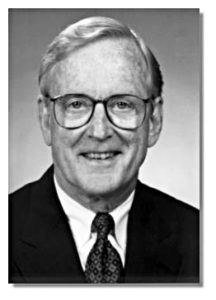 Jay Rockey, who was the director of public relations for the 1962 World’s Fair, helped put Seattle on the map by persuading Life to feature the fair on its cover, not once but twice, with photographs of the now iconic Space Needle and the Monorail. Rockey’s feat bolstered ticket sales and assured the fair’s success. More than 10 million visitors streamed through the gates in six months. He was just 34 at the time, married, and had three small children.
Jay Rockey, who was the director of public relations for the 1962 World’s Fair, helped put Seattle on the map by persuading Life to feature the fair on its cover, not once but twice, with photographs of the now iconic Space Needle and the Monorail. Rockey’s feat bolstered ticket sales and assured the fair’s success. More than 10 million visitors streamed through the gates in six months. He was just 34 at the time, married, and had three small children.
The day after the fair closed, he opened his own firm, Jay Rockey Public Relations, in time becoming employer and mentor to a generation of public relations mavens in the region who still consider him a legend in the field. “If you polled anyone in the PR community in Puget Sound for the last 40 years,” said Don Kraft, a longtime advertising executive in Seattle, “Jay Rockey would have won that poll every year. No one can remember who the agencies were before Jay came along.”
Jay Rockey was born in 1928 and raised in Olympia, the middle of three sons. His father, McClellan “Chick” Rockey, an acclaimed athlete, coached and taught at Olympia High School. His mother, Celia, a teacher and trained as a pharmacist, was a stay-at-home mom. When he was five, Jay Rockey gave himself the nickname “Speed” and by the time he was a teenager he had become “as big a leader as you’ll ever find among young men,” said childhood friend, Dale Stedman. “Everyone liked him, students, teachers.” His appeal as a leader and his laid-back geniality were qualities that would distinguish him throughout his life.
Rockey was the first athlete from Olympia High School to letter in all four major sports. He was quarterback in football, center in basketball, student body president. If that wasn’t enough, he also had a fine tenor voice. “I always looked up to him,” his older brother Ward said. “He was the kind of kid who did the right thing most of the time, wasn’t screwed up by crazy ideas, had good instincts. He didn’t mess around. He liked the idea of being a leader.”
During summers, the brothers spotted forest fires together in the Olympic Mountains, living in a fire lookout dubbed the “Big Eye in the Sky,” built trails along the Hamma Hamma River, and picked oysters on the Hood Canal. “He was a quiet success,” Ward remembered, “people close to him recognized that. Bragging was not his bag at all. He didn’t call attention to himself. He was a standup by being there.”
Chick Rockey would take his sons fishing on Puget Sound and they’d sleep on the beach under stars. Out on the water, Jay almost always was first to get a big salmon on hook. When Ward complained to his father, Chick suggested he trade poles with his younger brother. “The fish would still hit on the pole in Jay’s hands,” Ward said.
World War II hung over Jay Rockey’s high school years. “We knew we’d end up there, in the war,” said Stedman, who has remained a lifelong friend. In 1945 Jay graduated, enlisted in the Navy, and was posted to Hawaii. When the war was over Jay followed Ward to Washington State University in Pullman, on the GI bill. He took courses in English, business, and journalism, and joined Sigma Nu fraternity.
Jay and Ward teamed up with two other college friends to form The Spectacles, an acapella quartet that serenaded sororities and sang popular ballads at school dances. Jay was the lead singer, of course. “He was very confident in himself, naturally confident,” said Ward. “He never got nervous before we sang.” Jay doubled up on classes and graduated from the department of speech communication in 1950.
He was straightaway recalled by the Navy, bound this time for the frontlines in Korea. But while standing in line to be shipped out, he was recognized by an officer who knew the family and its athletic reputation. On the spot he reassigned Rockey to San Diego to play on the Navy’s championship basketball team. He later served in Honolulu, in the Navy press offices, his first PR experience.
Rockey returned to Olympia for a job as an editor and writer for a small newspaper and later worked for United Press International. In 1953, he landed a public relations job with Alcoa in Vancouver, Washington. He met Retha Inghram soon after on a blind date, and they were married in 1954 in a small wedding in Lewiston, Idaho. When he was offered a job as manager of Alcoa’s PR department in New York, they headed east for the next seven years. Their three children, Helen, Susan, and David, were born on the East Coast, in Pennsylvania, New York, and New Jersey, respectively, in the span of three years. Retha was busy too.
The New York scene was exciting and Jay loved the work, easily making friends and contacts he would call on later. But he and Retha missed the West Coast. On a trip to Seattle Jay was unexpectedly offered a job with the Century 21 Exposition, a futurist pipedream of Seattle boosters and grandees, just getting underway. Jay and Retha packed the station wagon and headed west with their three kids. The trip was long, hot, and boring. When David threatened mutiny in North Dakota and refused to get back in the car, Jay regaled him with tales about how much fun they’d have at the fair in Seattle and convinced David to continue west with the rest of the family. The Rockey family arrived in Seattle all in one piece.
One of the first things Jay did after starting his new job was to suggest that the name “Century 21 Exposition” be changed to the Seattle World’s Fair. He had responsibility for ticket sales, and felt it would be a hard sell to get people to an exposition in a town that few people in 1960 could locate on a map. “Everyone knew what a fair was,” he told a reporter. But an exposition about the future? What was that? His bosses agreed to make the change.
Rockey and his burgeoning staff were young and energetic and eventually secured more than 1,000 magazine stories and 50,000 newspaper articles about the fair, including pieces in The New York Times, Sunset, Newsweek, and The Los Angeles Times. When Life ran the cover photograph of the Space Needle, with untethered construction workers balanced 520 feet in the air on its rim, Rockey remembered it as a turning point.
But the outcome of the enterprise was far from guaranteed and Rockey had a young family to feed. “Actually, it was not much fun at the time,” he told a reporter, one of many who wrote stories about him over the years. “No one knew if the fair would succeed until advanced ticket sales started coming in. It was a great opportunity to succeed—or fail. It was a period of unbelievable challenge, uncertainty, and fear.”
Before it was over, visitors and dignitaries from all over the world would arrive in Seattle to visit the international exhibits, see appearances by Ella Fitzgerald, Elvis Presley, John Glenn, Soviet cosmonaut Titov, Ed Sullivan, and Nat King Cole, and ride the Bubbleator to the World of Tomorrow. The fair was the first international exposition to turn a profit. And Jay Rockey had established his public relations credentials back on home turf.
Once, he allowed himself a small, brief smile in recounting the Life magazine coup to a reporter, but he didn’t glory in his accomplishments. “Jay was not a look-at-me kind of guy,” said Kraft, who invited him to pitch camp next door to his offices when Rockey decided to set up his own shop the day after the fair closed. Jay had one employee, Mike Dederer. Retha stepped in as the company’s comptroller and offered creative ideas on occasion. When the Seattle Center needed a name for a proposed music and arts festival, it was Retha who proposed “Bumbershoot.”
“Jay led by example, he was very hands-on,” Kraft remembered. “He knew what he wanted but didn’t throw his weight around. He joked, he was fun to be with. And when he needed to, he’d sit down at his old Royal typewriter and bang a story out.”
When Jay and Retha later moved the company, later called The Rockey Company, to offices onto Fifth Avenue, in Seattle, Jay worked at a standup desk near a second floor window that had a view of the Monorail tracks, and he could see the train of the future as it passed by every day on its way to and from the Seattle Center.
The Rockey Company grew to become one of the most celebrated PR firms in the Pacific Northwest and was named as first in its field in 1989 by the Puget Sound Business Journal. The company was the 14th largest independent PR firm in the U.S., with more than 50 staffers, and at various times with offices in Portland, Anchorage, San Francisco, Spokane, Washington, D.C., and New York. The company’s long, illustrious client list included Alyeska Pipeline, Boeing, Virginia Mason, British Airways, Washington Mutual, and Nintendo. In 1976 Rockey was elected as president of the Public Relations Society of America, a position that took him around the world. He served on more than a dozen boards, including the Museum of Flight, Ryther Child Center, and the Downtown Seattle Association and as vice president of the Seattle Chamber of Commerce. He was president of The Rainier Club and of the board of Overlake Golf & Country Club.
His alma mater, WSU, especially benefitted from his generosity. The Edward R. Murrow School of Communication was founded at his urging and with his help, and he is a permanent member of the WSU Foundation Board of Trustees. His expertise in public relations helped to bring several WSU capital campaigns to successful financial completion, including the construction of the championship golf course Palouse Ridge. His contributions were recognized with WSU’s Weldon B. Gibson Distinguished Volunteer Award. In 2002 the WSU chapter of the Public Relations Society of America was named in honor of Jay Rockey.
Over the years, Jay, Retha, and their three children often spent weekends at their vacation home in Union, Washington, near Alderbrook, and not far from where Jay fished with his father and brothers as a boy. Jay and Retha gathered friends and family together for cook-outs and fireworks and an annual golf tournament, The Oyster Open, with Jay performing as master of ceremony for the after-tournament award party.
“Balance? I think work and family were totally intertwined for Dad,” said daughter, Susan. “Work was family to him, as well. He always was professional at the office, but he respected each person like family. When a PR firm swooped into town and poached one of his firm’s clients and maybe a couple of employees, he sent all his ex-staffers his sincere best wishes.”
His brother Ward remembered Jay giving parties and sitting “back and playing the part of the major domo, letting everyone have their time in the spotlight.” His friend Dale Stedman recalled Jay on the deck, “congenial, willing, sipping on a drink.”
Jay and his business partners sold the company to Hill and Knowlton, a New York PR firm, in 2000. Jay and Retha didn’t exactly retire, just shifted focus, devoting their time to the causes and organizations they cared about and spending time with their grown children and friends.
When Retha needed care, Jay took her to doctor appointments and out to dinner, in a wheelchair, when it became necessary. The two became known and welcomed in Kirkland’s dining establishments as the ‘happy couple.’ She died in 2009. He finally stopped going to the office in 2011 and in 2014 moved to an apartment in a retirement community in Seattle, the Mirabella. He can see the lights of Seattle’s South Lake Union and Space Needle from his windows, the city to which he gave his best and his all; a witness to its transformation from a provincial town to a high-tech metropolis.
Jay Rockey still had a strong tenor voice and an easy smile that conveyed the warm congeniality and unruffled nature that friends saw in him in his youth. At 90, he was still in the game, enjoying visits from family and old friends and making new friends. Some evenings he could be found in front of a microphone at many fun gatherings at the Mirabella, crooning out ballads for the enjoyment of his admiring audience.
“Any business as competitive as public relations is marked by disappointments, as well as by creative successes and achievements,” Jay Rockey wrote in a story called “Secrets to Succeeding.” “A succession of highs and lows is the natural pattern. And through it all, the successful professional must be resilient and under control—which brings to mind the old locker room line: ‘To finish first—you must first finish.’”
Jay Rockey is survived by his brother Ward Rockey of San Diego; brother Dean (Frances) Rockey of Whidbey Island; daughters Helen and Susan, son David (Mary), all from the Seattle area; and grandchildren, F. Jay, Christine (Parker), Anna and Colin.
The family would like to thank all the residents and staff at Mirabella who befriended Jay these past years, especially Nurse Jenny, Ali Macdonald and dear family friend, Barbara Bye Goesling.
A memorial service will be held the weekend of April 21, 2018. In lieu of flowers, a memorial may be made to the Jay & Retha Rockey Communication Excellence Endowment at the Edward R. Murrow College of Communication, Washington State University. Contact: 509-335-6686, PO Box 641925, Pullman, WA 99164-1925. For more information, please visit www.jayrockey.net.
This obituary was provided by Jay’s daughter, Susan Martin, for posting here to share with the Seattle marcomm community.
Pub. Note: The Puget Sound Chapter of the Public Relations Society of America named its coveted Lifetime Achievement Award after Jay Rockey, and he was in the first class of MARKETING IMMORTALS inductees. You can read his Biography and Commentary at www.marketingimmortals.com.


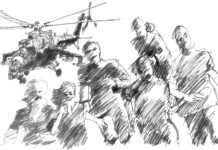
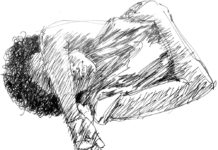

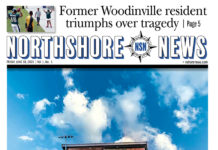
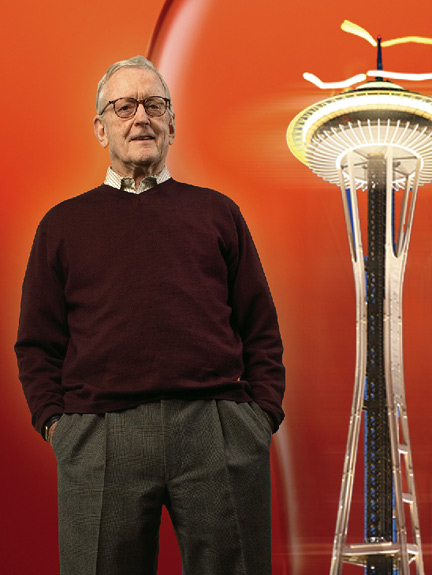
Susan what a beautiful remembrance. I just found out more about you too. Condolances to those left behind. Jay stood out in more than just stature. What a legacy.
Jay was truly a class act. A great leader. I enjoyed serving on the board of The Rainier Club with him. Big Hugs to the Rockey Family.
Cheri Brennan
I first met Mr. Rockey as a young staffer at the Seattle Chamber. He was a VP, and impressed me from the beginning as wise, thoughtful and kind-hearted. He gave back in countless ways to his profession, to his community, and to his alma mater (Go Cougs!), to name just a few. The Jay and Retha Rockey Communication Excellence Endowment at WSU’s Murrow College of Communication will help perpetuate his legacy. RIP. Heartfelt condolences to his family.
Yes, Jay was an icon, legend, mentor and true professional. He was also a kind and caring gentleman.
Very nicely written. Jay was unquestionably a larger-than-life figure on the Seattle public relations scene who, in many ways, guided us into the modern era. He also was a good friend, and will be sorely missed. Jay, may your steadfast devotion to those around you accompany you as your journey continues.
A remarkable and irreplaceable contributor to the growth of the Pacific Northwest, Jay Rockey was an inspiration and model for several generations of us who followed on a path he’d cleared for us. May God grant him eternal rest and peace, and consolation and comfort to his family.
As a young buck just entering the ad biz in 1966 with Soderberg & Cleveland in the Tower Building, I remember being in awe of those other established occupants of the building which included Jay Rockey, Jack Ehrig, Don Kraft, Ken Jacobsen, David Warmuth and of course all those celebrities from KVI AM. What a time it was and I felt so privileged to occasionally share an elevator with them. Memories from long ago and far away. RIP Jay.
What a terrific story about a terrific PR guy. So sorry to hear of his recent passing.
I learned so much working for Jay Rockey. Mostly patience and persistence! Rest in peace, Mr. Rockey.
Comments are closed.